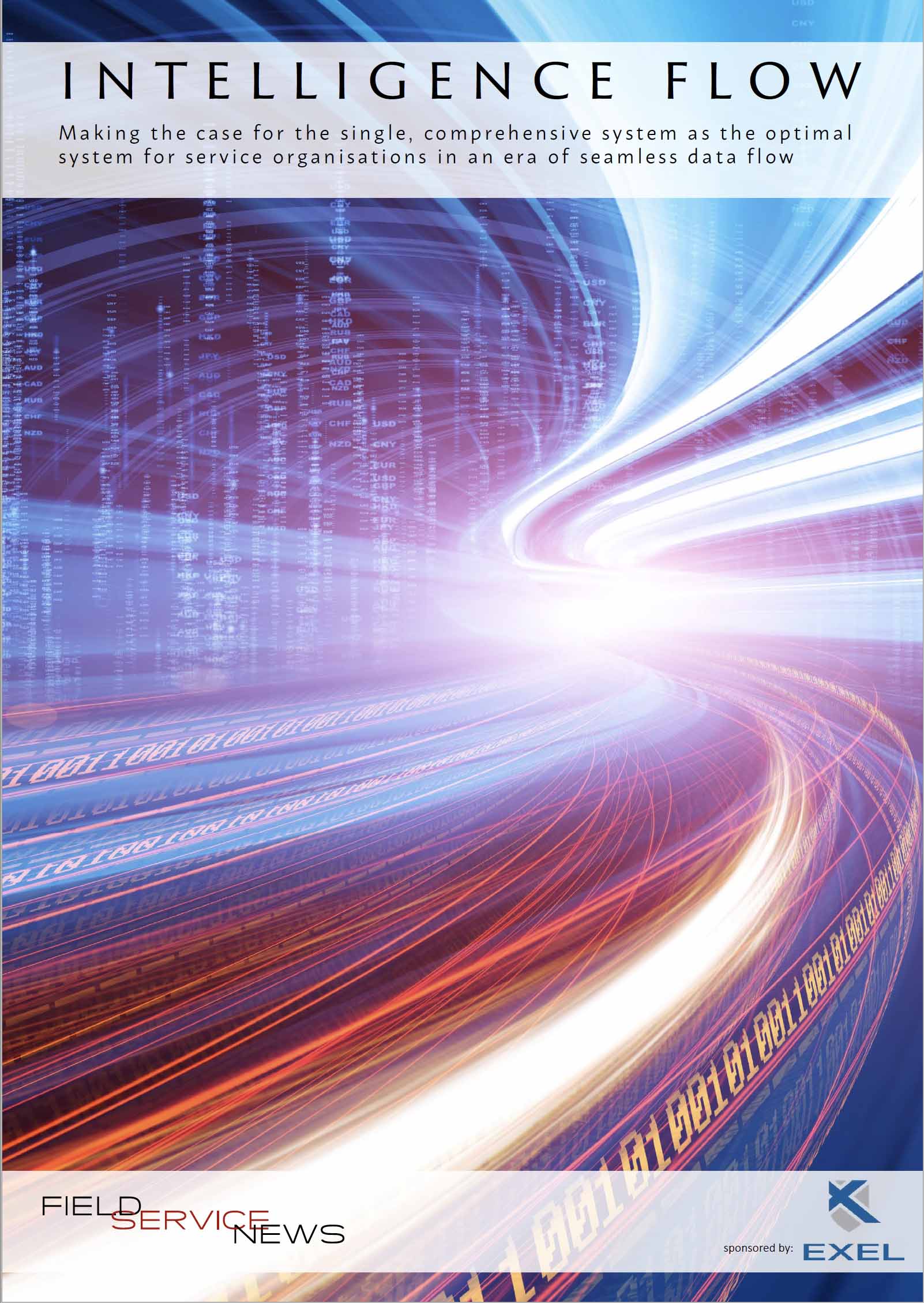White Paper: Intelligence Flow (2021)
The debate about best-of-breed technology stacks versus the single author, all-in-one platform approach has been one that has been held for over a decade at least. Now in this exclusive Field Service News white paper, we put forward the argument that the trajectory our industry is on suggests it is the platform approach that we should embrace…
Across the last few years, we have seen a clear trend emerge amongst field service organisations. In the past, service contracts were often seen as the additional ‘sweetener’ bundled in to help drive product sales.
Then within the last decade, we began to see field service no longer viewed as a necessary evil but more a critical strategic aspect in revenue generation.
Field service operations that had for so long been deemed as cost centres across the industry made the move en masse to becoming profit centres.
However, today, as service delivery continues to evolve into a critical strategic revenue generator for many organisations, particularly those within manufacturing verticals, the industry is moving beyond the initial concept of service as a revenue stream and into more and more detailed discussions around servitization, outcome-based service contracts and a significant focus on customer success.
At the heart of these ongoing developments is the realisation that the silos between different business units must be broken down, particularly in terms of data flow and information exchange, if the field service operation is to be able to be a core driver in business success.
Indeed, regardless of whether your organisation is merely seeking to maximise efficiencies across the service operation or is moving towards a fully servitized business model, the need for the effective flow of information and data across the wider business has never been more apparent.
In this paper, we shall put forward the case as to why the all-in-one platform approach can be far more productive in achieving a more seamless transfer of data and intelligence and why this is critical for effective and robust decision-making.
White Paper: Intelligence Flow (2021)
The debate about best-of-breed technology stacks versus the single author, all-in-one platform approach has been one that has been held for over a decade at least. Now in this exclusive Field Service News white paper, we put forward the argument that the trajectory our industry is on suggests it is the platform approach that we should embrace…
Across the last few years, we have seen a clear trend emerge amongst field service organisations. In the past, service contracts were often seen as the additional ‘sweetener’ bundled in to help drive product sales.
Then within the last decade, we began to see field service no longer viewed as a necessary evil but more a critical strategic aspect in revenue generation.
Field service operations that had for so long been deemed as cost centres across the industry made the move en masse to becoming profit centres.
However, today, as service delivery continues to evolve into a critical strategic revenue generator for many organisations, particularly those within manufacturing verticals, the industry is moving beyond the initial concept of service as a revenue stream and into more and more detailed discussions around servitization, outcome-based service contracts and a significant focus on customer success.
At the heart of these ongoing developments is the realisation that the silos between different business units must be broken down, particularly in terms of data flow and information exchange, if the field service operation is to be able to be a core driver in business success.
Indeed, regardless of whether your organisation is merely seeking to maximise efficiencies across the service operation or is moving towards a fully servitized business model, the need for the effective flow of information and data across the wider business has never been more apparent.
In this paper, we shall put forward the case as to why the all-in-one platform approach can be far more productive in achieving a more seamless transfer of data and intelligence and why this is critical for effective and robust decision-making.



